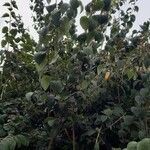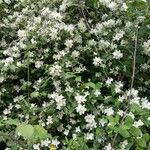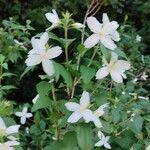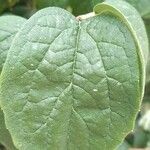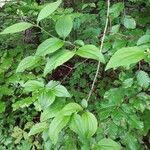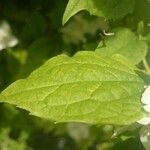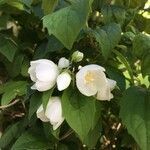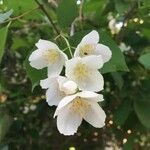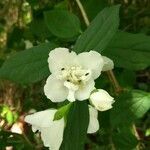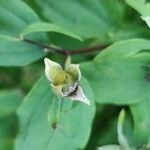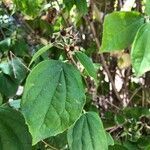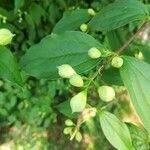Shrubs, 10–40 dm. Stems erect to ascending, green, older stems brown, branched, glabrous or sparsely strigose (especially at nodes); bark deciduous, exfoliating or flaking, reddish; branches erect to arching; axillary buds hidden in pouches, sometimes apex exposed, especially on vigorous sprout-shoots. Leaves: petiole 1–6 mm; blade usually broadly lanceolate to broadly ovate, or narrowly to broadly elliptic, rarely narrowly lanceolate in horticultural forms, 3–10 × 2–6 cm, larger blades usually greater than 6 × 2.5 cm, base narrowly cuneate to rounded, margins entire to irregularly or regularly serrate, crenate, or dentate, plane, abaxial surface glabrous or sparsely strigose, hairs usually appressed-ascending, not twisted, main vein axils often moderately to densely strigose-tomentose, main veins sometimes sparsely strigose, secondary and tertiary veins rarely sparsely strigose, adaxial surface glabrous or sparsely strigose, especially near base and margins. Inflorescences cymose racemes, 5–7(–9)-flowered, proximal 2 flowers often in axils of nearly normal to much reduced (bracteal) leaves. Pedicels 3–20 mm, glabrous or sparsely strigose. Flowers: hypanthium glabrous or sparsely strigose to villous; sepals ovate, ovate-lanceolate, or triangular, 4–8 × 2.5–5 mm, apex acute to acuminate, abaxial surface glabrous or sparsely strigose, adaxial surface glabrous except densely villosulous distally; petals white to cream, oblong, obovate, or orbiculate, 5–25 × 5–22 mm; stamens 20–50; filaments distinct, 4–9 mm; anthers 1–1.5 × 0.7–1 mm; styles 4, connate proximally, cylindric, 7–10 mm, lobes 3–8 × 0.3–0.9 mm; stigmatic surfaces 1–4 mm. Capsules obconic to obovoid, 7–11 × 4–7 mm. Seeds caudate, 3 mm. 2n = 26.
More
Shrub to 4 m; bark of young twigs brown, exfoliating the second year; lvs short-petioled, ovate or ovate-oblong, 4–8 cm, acuminate, remotely dentate, pubescent in and near the axils of the 3 main veins beneath, otherwise glabrous; fls in terminal racemes of 5–7, 3 cm wide, fragrant; pedicels, hypanthium, and outer side of sep glabrous; 2n=26. Native of Europe, often escaped from cult. in our range. June, July.
